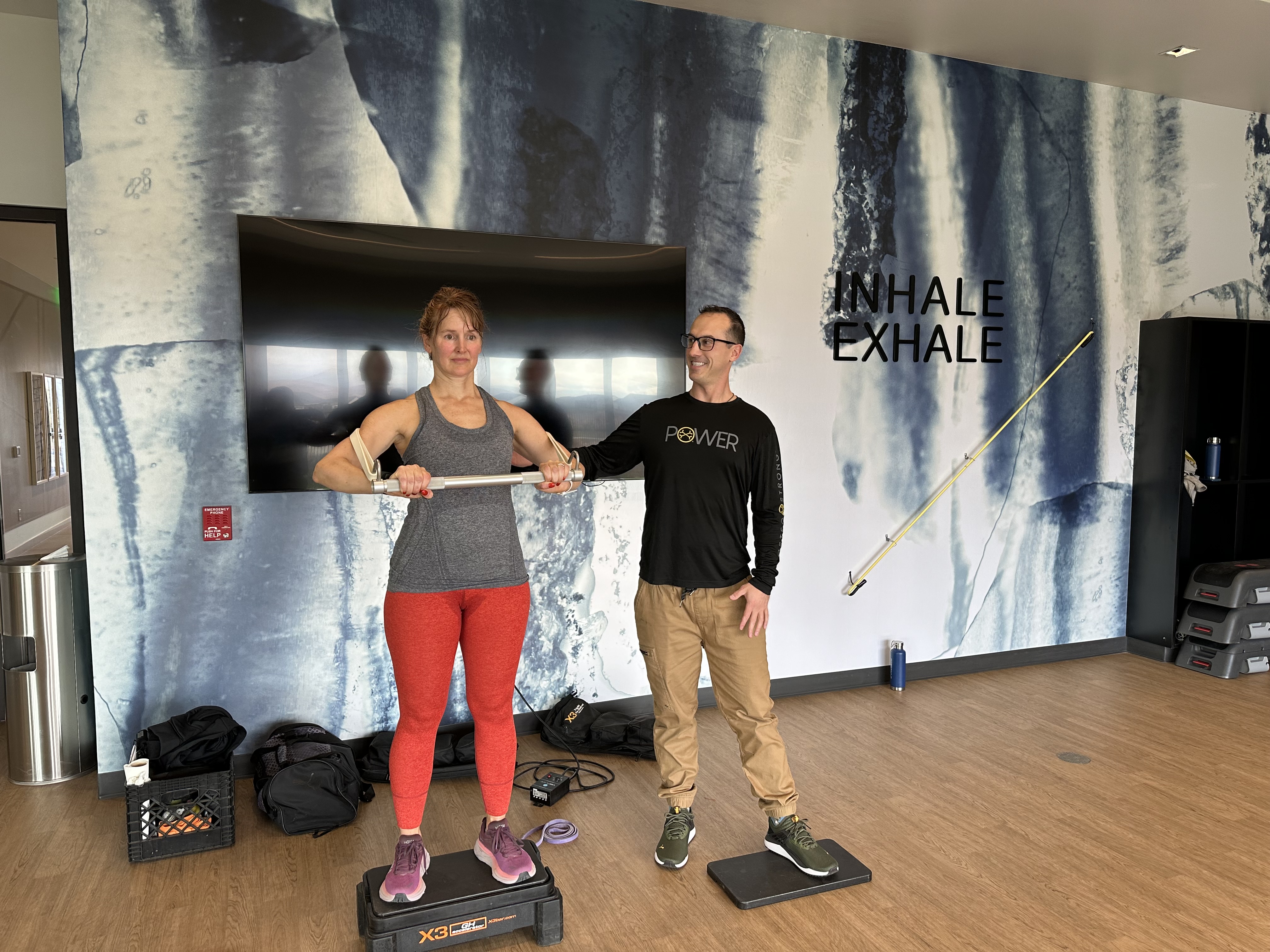Whole Body Vibration

But comprehensive research about whole-body vibration is lacking. It's not yet clear if whole-body vibration provides the same range of health benefits as exercise you actively engage in, such as walking, biking or swimming.
Some research does show that whole-body vibration may help improve muscle strength and that it may help with weight loss when you also cut back on calories.
Whole-body vibration may also have a role beyond sports and fitness. Some research shows that whole-body vibration, when performed correctly and under medical supervision when needed, can:
>Reduce back pain
>Improve strength and balance in older adults
>Reduce bone loss
>circulation and stabilization firing
>growth hormone
What is Whole Body Vibration
Whole body vibration (WBV) therapy involves standing, sitting, or lying on a machine with a vibrating platform. The vibrations transmit energy to the body, causing muscles to contract and relax multiple times per second. This therapy is used for a variety of health and fitness purposes, ranging from improving muscle strength to enhancing circulation and bone density.
Advocates say that as little as 15 minutes a day of whole-body vibration three times a week may aid weight loss, burn fat, improve flexibility, enhance blood flow, reduce muscle soreness after exercise, build strength and decrease the stress hormone cortisol.
Read More Here: Whole Body Vibration
Benefits of Whole Body Vibration
Improved Muscle Strength and Power:
WBV can enhance muscle strength and power by stimulating muscle contractions more frequently than voluntary contractions during exercise. This increased muscle activation can lead to strength gains, especially when combined with traditional resistance training. Studies have shown that WBV can significantly improve muscle strength and power in various populations, including athletes and older adults .
Enhanced Bone Density: WBV has been found to positively impact bone health, particularly in postmenopausal women and individuals with osteoporosis. The mechanical stimulation from vibrations can promote bone formation and increase bone mineral density. Research indicates that WBV can be an effective intervention for maintaining and improving bone health, reducing the risk of fractures .
Improved Balance and Coordination:
WBV can enhance neuromuscular function, leading to better balance and coordination. This is particularly beneficial for older adults and individuals with balance impairments. Studies have shown that WBV training can significantly improve balance, reduce fall risk, and enhance overall coordination in both healthy individuals and those with medical conditions affecting balance .
Enhanced Circulation and Cardiovascular Health:
WBV can stimulate blood flow and improve circulation, which is beneficial for cardiovascular health. The increased muscle activity and mechanical stimulation can enhance vascular function, reduce blood pressure, and improve overall cardiovascular health. Research supports the cardiovascular benefits of WBV, indicating improvements in blood flow and reductions in arterial stiffness .
See What Our Customer Say About Us
Denise, 70

"My one year DEXA results showed that 7% improvement in spine and 5% improvement in the femur. bioDensity worked for me."
Karen, 65

“I was diagnosed with osteopenia about 12 years ago and had no idea of the meaning of the condition. I was merely told that I should exercise more. I had never enjoyed the gym, nor did I ever exercise consistently in my life, so finding something I enjoyed was a real revelation."
Vamsi, 48

"Steven is a powerhouse! If you’re looking to increase your energy, Steven will blow your mind. Steven walks his talk and he is someone who is so dedicated. I highly recommend working with him.”
Frequently Asked Questions
Answers To Commonly Questions
What should I wear? Is there special equipment required?
We suggest flat shoes and something comfortable. Otherwise dress like you're going to meet a friend. Workout clothes or special equipment is not required.
Will I be sore after my session?
The worst soreness we hear about is usually after the first session and the most common feedback is mild. The body responds to its conditioning so each session thereafter the body will feel less and less sore.
Is it safe if I have osteoporosis?
Yes, many people with a bone density T-score of -3 or lower on the DEXA scan reported benefits like increase in BMD, improved strength, balance, and posture plus more energy, and reduced pain.
How long before I see results?
Clients report reduced joint and back pain within 1-12 sessions. Because of the metabolic speed of bone, it may take 12-24 months to see substantial results in bone density. Building muscle gives more energy and stamina, less pain, and clothes can be fitting differently in 2-3 weeks.
How long before I see results?
Clients report reduced joint and back pain within 1-12 sessions. Because of the metabolic speed of bone, it may take 12-24 months to see substantial results in bone density. Building muscle gives more energy and stamina, less pain, and clothes can be fitting differently in 2-3 weeks.
Source
Rauch, F., Sievanen, H., Boonen, S., Cardinale, M., Degens, H., Felsenberg, D., ... & Rittweger, J. (2010). Reporting whole-body vibration intervention studies: recommendations of the International Society of Musculoskeletal and Neuronal Interactions. Journal of Musculoskeletal and Neuronal Interactions, 10(3), 193-198.
Cochrane, D. J. (2011). Vibration exercise: the potential benefits. International Journal of Sports Medicine, 32(2), 75-99.
Bogaerts, A., Delecluse, C., Claessens, A. L., Troosters, T., Boonen, S., & Verschueren, S. M. (2007). Impact of whole-body
vibration training versus fitness training on muscle strength and muscle mass in older men: a 1-year randomized controlled trial. The Journals of Gerontology Series A: Biological Sciences and Medical Sciences, 62(6), 630-635.
Marin, P. J., & Rhea, M. R. (2010). Effects of vibration training on muscle power: a meta-analysis. Journal of Strength and Conditioning Research, 24(3), 871-878.
Verschueren, S. M., Roelants, M., Delecluse, C., Swinnen, S., Vanderschueren, D., & Boonen, S. (2004). Effect of 6-month whole body vibration training on hip density, muscle strength, and postural control in postmenopausal women: a randomized controlled pilot study. Journal of Bone and Mineral Research, 19(3), 352-359.
Totosy de Zepetnek, J. O., Giangregorio, L. M., Craven, B. C., & Phillips, S. M. (2009). Whole-body vibration as potential intervention for people with low bone mineral density and osteoporosis: a review. Journal of Rehabilitation Research and Development, 46(4), 529-542.
Bruyere, O., Wuidart, M. A., Palma, E. D., Gourlay, M., Ethgen, O., Richy, F., & Reginster, J. Y. (2005). Controlled whole body vibration to decrease fall risk and improve health-related quality of life of nursing home residents. Archives of Physical Medicine and Rehabilitation, 86(2), 303-307.
Amonette, W. E., & Dupler, T. L. (2002). The effects of two different frequencies of whole body vibration on neuromuscular performance. Journal of Strength and Conditioning Research, 16(1), 92-98.
Pollock, R. D., Martin, F. C., Newham, D. J., & Srikanth, V. (2012). Whole body vibration exercise in older adults: feasibility and its effect on muscle strength, bone density, and balance. The Journal of the American Geriatrics Society, 60(9), 1784-1793.
Rubin, C., & Lanyon, L. E. (1984). Regulation of bone formation by applied dynamic loads. The Journal of Bone and Joint Surgery. American Volume, 66(3), 397-402.
Gusi, N., Raimundo, A., & Leal, A. (2006). Low-frequency vibratory exercise reduces the risk of bone fracture more than walking: a randomized controlled trial. BMC Musculoskeletal Disorders, 7(1), 92.

Contact Us
(775) 347-7751
1270 E. Plumb Ln.
Reno, NV 89502
